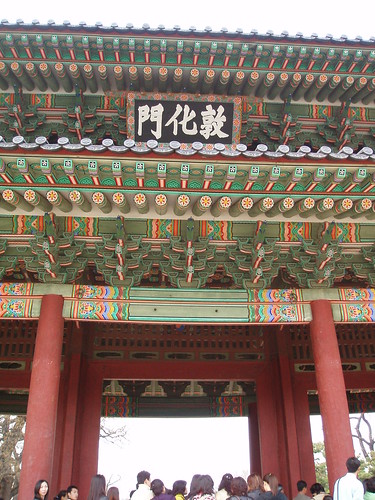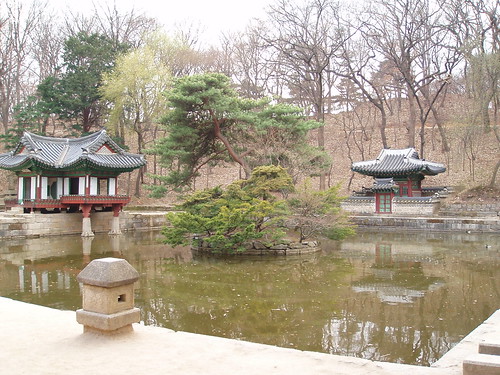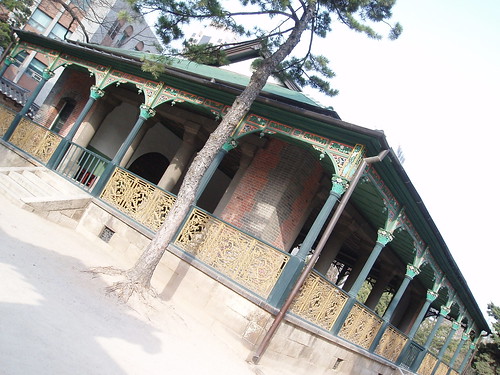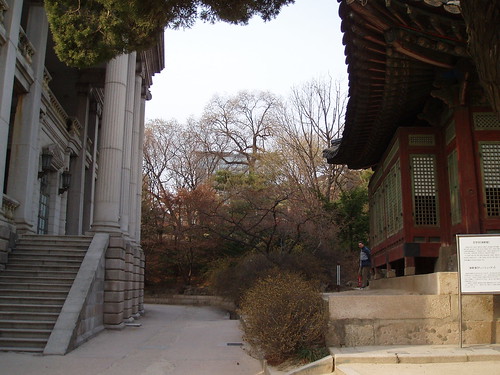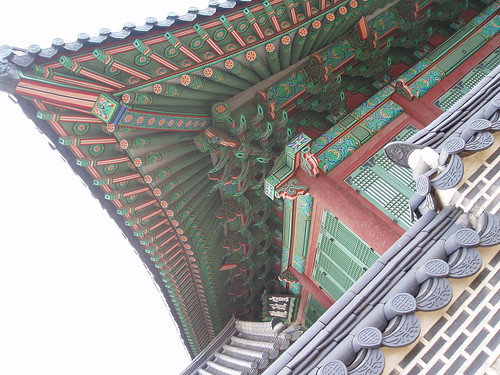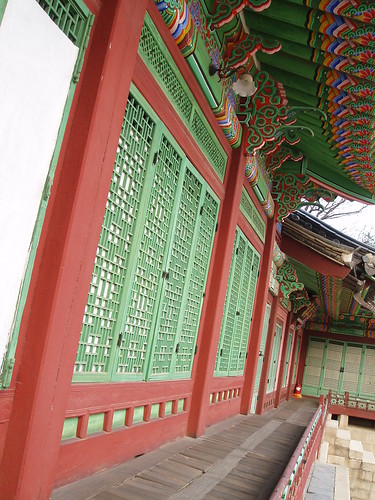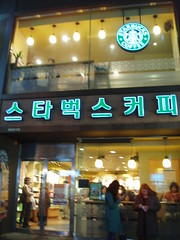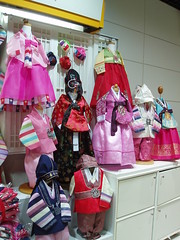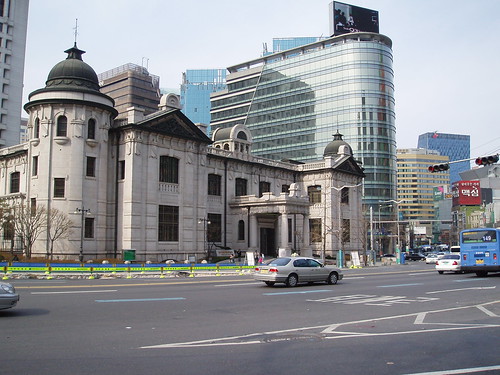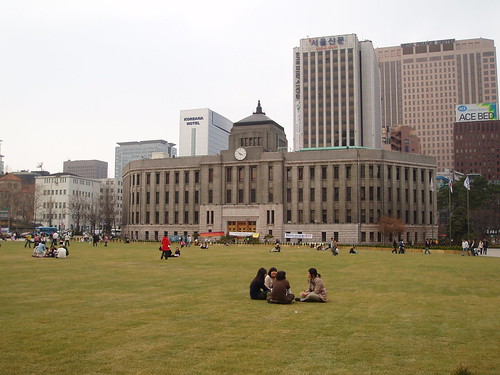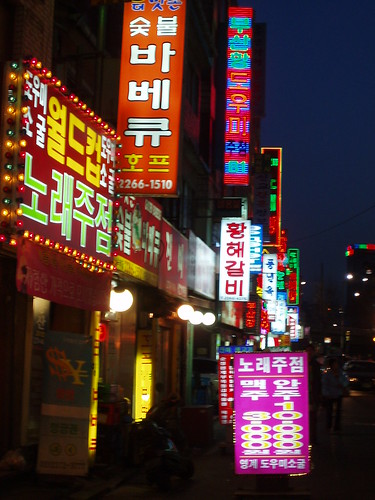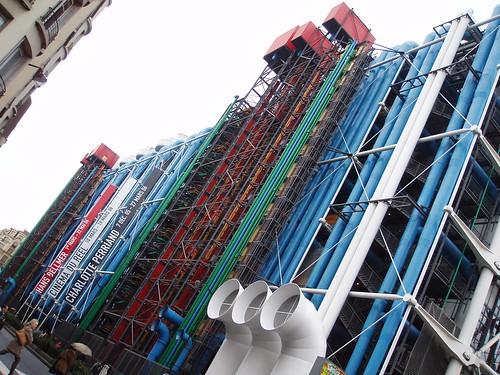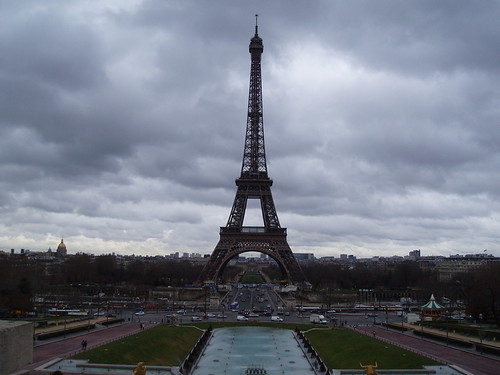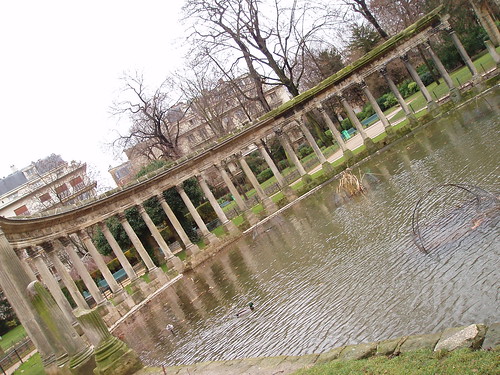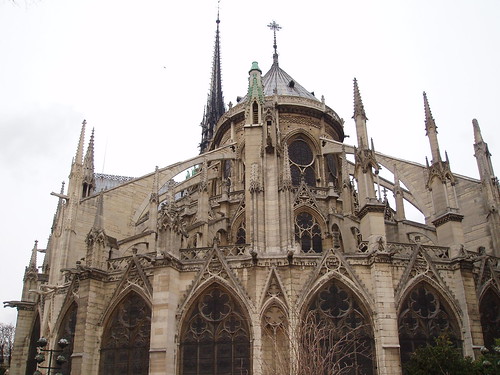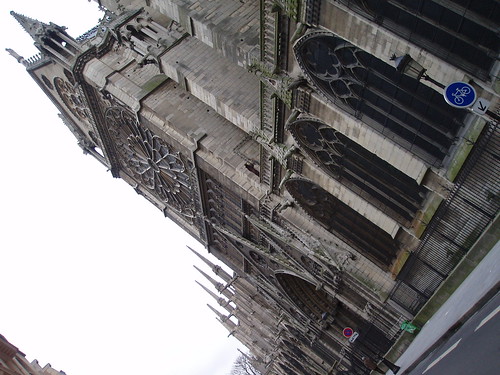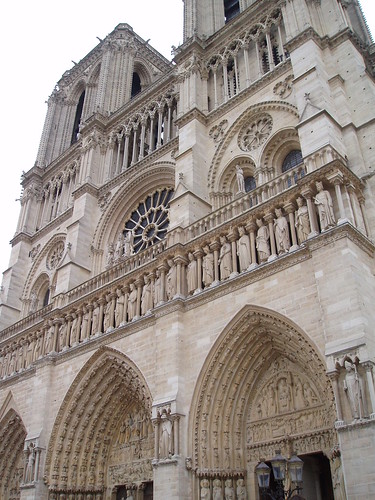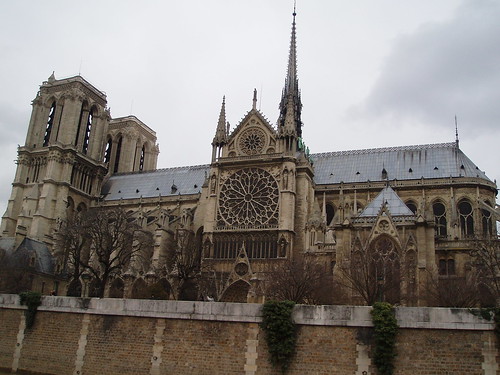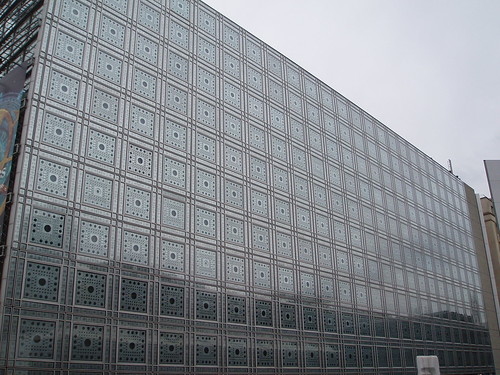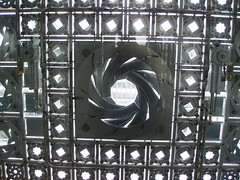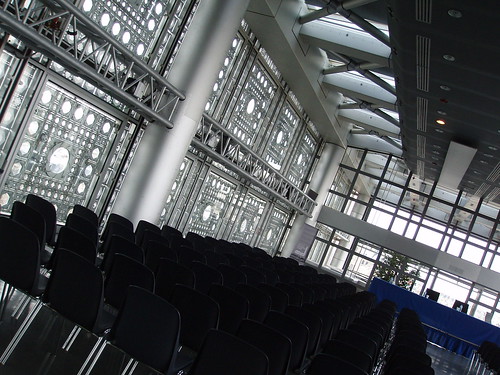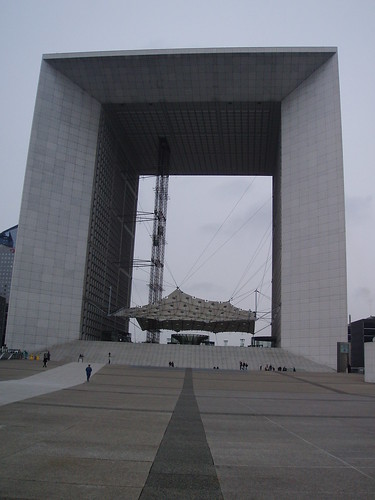Tokyo 2006 Part VIII: Maid Cafes and Akihabara - the otaku town
Nowhere else in Tokyo surprised me as much as Akihabara did. I don't know where to begin... Anyway let me talk about "maid cafe" first.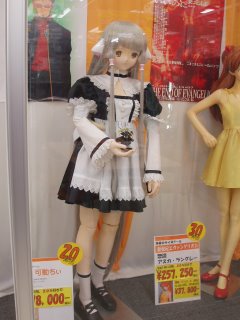 A very unique type of cafe made a breakthrough in Japan last year. It's called "maid cafe" - a cafe in which young waitresses dressed in French maid costume (see the right photo) serve you as if you were their master.
A very unique type of cafe made a breakthrough in Japan last year. It's called "maid cafe" - a cafe in which young waitresses dressed in French maid costume (see the right photo) serve you as if you were their master.
I wanted to experience this Tokyo (sub-)culture. I knew maid cafes originally came from Akihabara, known as the otaku town as well as the electricity town (see below for more about Akihabara). But there are many maid cafes there (because it is a booming industry). I could only visit one or two. I didn't want to end up in a wrong place. So I did a bit of research on maid cafes via Google, which revealed that the following six are long-running and popular maid cafes (special thanks to Maid Kissa Wiki and Food Drink News, August 2004):
1. Cure Maid Cafe
Opened on 30th March 2001. The oldest maid cafe among those currently in business. Seems the most orthodox in the sense that it focuses on "cafe" rather than "maid". For example, their pot of tea receives a high reputation.
2. Hiyoko-ya
Opened on 10th November 2001. The second oldest in Akihabara. Seems like a maid herself manages the cafe.
3. Cafe Mai:lish
Opened on 19th July 2002. The third oldest maid cafe. Maid costumes here are those designed by Reticule, a famous brand for French maid costume (or so they say). Its official website shows quite nice photos of maids working here, indicating that customers here come to see a particular maid they like. 4. Cos-cha
4. Cos-cha
Opened on 3rd May 2003. Maids are called "angels" here. This cafe is famous for its "events". For example, in winter of 2003, all maids wore school swimsuits (see a life-size doll on the left in the right photo), causing a long queue of 600 customers. Its coffee and bread is said to taste excellent. It also boasts five lunch sets costing around 1000 yen (5 pounds or 8.33 dollars).
5. Pinafore
Opened on 1st October 2003. The closest to Akihabara Railway/Metro Station among all the maid cafes in this area. Maids here wear pink maid costumes while other maid cafes feature black or dark blue. Its official website features diaries written by its maids. It focuses on communication between customers and maids.
6. @home
Opened on 14th August 2004. The first maid cafe that allows customers to play board/card games with maids. Some maids working here release a CD in which they sing. According to Wikipedia (the Japanese version), the company managing this cafe submitted the request for registering "maid cafe" as its trademark. Maid cafe fans from day one hate this cafe because of this.
As you see, some maid cafes go beyond the simple cafe service. Behind this trend lies the fact that customers, or those visiting Akihabara where maid cafes originate, are so-called otaku guys, who are not good at socializing, let alone flirting with girls.
Well, there are so many things to explain about this phenomenon. Let me begin with what otaku is.
Otaku can be translated into geek, nerd, or anorak. But its connotation is quite different from these English terms. Although the term now refers to anyone who is a maniac/freak in some specific thing, it originally means someone who loves manga, anime, video games, and/or "idols" (well, "idols" also need a bit of explanation, but just assume that "idols" are Japanese counterparts of Britney Spears or that kind of young female good-looking celebrities). Otaku guys feel awkward when they talk to "normal" people and, in particular, girls of the same generation. Girls don't like them either because they don't care about their apperance and hygiene. I remember my all-boy highschool classmates were totally divided between "normal" and otaku people.
This forces them to indulge themselves into underground culture, including child porn. On the other hand, they are energetic consumers of manga comic books, anime videos, and video games. Which has definitely contributed to the high quality of these products that are now appreciated worldwide.
Maid cafes are certainly part of this otaku culture. For some reason, otaku guys fancy girls in French maid costume (which I still don't understand). Such girls are featured in porn video games - I learned this from Wikipedia, by the way, as I don't play porn video games because I don't fancy two-dimensional girls. :) Maid cafes are basically a realization (literally) of their fantasies.
Last year, however, Denshaotoko (Train Man), a movie (and its television version) featuring an otaku guy's love story, and a scene of the guy going to a maid cafe, became a bit hit. This somehow made otaku and maid cafes mainstream.
-----
So I visited Cos-cha for lunch. Two waitresses - probably college students of the sweet type, definitely not the sexy type - dressed in indigo-coloured French maid costume were serving the customers. (Photographs are not allowed inside maid cafes.) When I entered the place, they greeted, "Welcome back, master." I knew this, so it didn't surprise me. But when they took orders and poured tap water into glasses, they kneeled down! This amazed me. The lunch itself was mediocre, by the way.
For a cup of coffee afterwards, I also visited Cafe Mai:lish. Here, some customers were girls. Yes, maid cafes are no longer just for otaku people. I hear maid cafes are popping up in other Japanese cities as well. I sat down at the counter. A otaku-looking guy next to me, in a shy way, talked to one of the "maids". 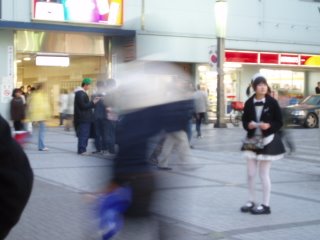 While I was walking around Akihabara, I spotted a few "maid reflexology" shops. Presumably you will be massaged by girls in French maid costume there. In front of Akihabara Station were a couple of girls in French maid costume handing out fliers to pedestrians (see the left photo). I didn't see this when I walked in Akihabara a year and three months ago.
While I was walking around Akihabara, I spotted a few "maid reflexology" shops. Presumably you will be massaged by girls in French maid costume there. In front of Akihabara Station were a couple of girls in French maid costume handing out fliers to pedestrians (see the left photo). I didn't see this when I walked in Akihabara a year and three months ago.
Okay, let me talk about Akihabara now. Some of you may know this, but this area of Tokyo has been known as the electricity town because a large number of shops specializing in electronics products cluster here - large department stores (foreigner-fridenly Laox, my parents' favorite Ishimaru-denki, Sato-musen, and Ono-den) have many branches within a walking distance alongside many small shops.
Things have started to change in the late 1990s, when the success of Windows 95 turned Akihabara into a place to buy PCs. The old guard Akihabara stores were overwhelmed by newly-opened shops specializing in PCs and related products. To my understanding, this was when otaku guys started visiting Akihabara. Before the advent of Windows 95, PCs were associated with the introverted type who loves to play porn video games on his PC. These people tend to like manga and anime as well. In the early 2000s, a few porn shops catering to such men appeared in backstreets.  That was what I knew before visiting Akihabara this time. What shocked me was that such porn shops are now in main streets! Next to a shop selling household electronics goods stands a six-story building in which all the floors are full of porn DVDs. Another is full of porn manga comic books. Yet another full of small plastic dolls of cute girls in bikinis or other kinds of scanty clothing presumably appearing in manga or video games (see the left photo). Some are even life-size and movable(!), costing around 200,000 yen (1000 quid or 1600 bucks) -you already saw these in the photos above.
That was what I knew before visiting Akihabara this time. What shocked me was that such porn shops are now in main streets! Next to a shop selling household electronics goods stands a six-story building in which all the floors are full of porn DVDs. Another is full of porn manga comic books. Yet another full of small plastic dolls of cute girls in bikinis or other kinds of scanty clothing presumably appearing in manga or video games (see the left photo). Some are even life-size and movable(!), costing around 200,000 yen (1000 quid or 1600 bucks) -you already saw these in the photos above.
Not surprisingly, you rarely see women in this area. You no longer take your children to go shopping in Akihabara...
To sum up, things that are supposed to be underground are not underground anymore in Akihabara. I believe nowhere else in the world is like this. It may make you sick - I don't want to go again - but don't miss Akihabara when you visit Tokyo. Otherwise you ignore the sizable part of Japanese culture.
Postscript 1: According to Maid Kissa Wiki, you can enjoy a maid cafe even in Seoul, South Korea, or in Taipei, Taiwan - Amuamu in Seoul and Fatimaid in Taipei.
Postscript 2: These days there are otaku girls as well in Japan. They love porn comic books featuring good-looking gay guys. Instead of Akihabara, their mecca is Otaku Dori or Otome Street in Ikebukuro. I learned this after coming back to London. Next time I visit Tokyo, I must go there. :)
 Omotesando has massively changed during the last couple of years. It is now a "super brand street" where top fashion brands - Dior (see the right photo), Louis Vuitton, Prada, and so forth - all open their fancy-looking stores. Omotesando Hills is the latest addition to the area's drastic metamorphosis.
Omotesando has massively changed during the last couple of years. It is now a "super brand street" where top fashion brands - Dior (see the right photo), Louis Vuitton, Prada, and so forth - all open their fancy-looking stores. Omotesando Hills is the latest addition to the area's drastic metamorphosis.
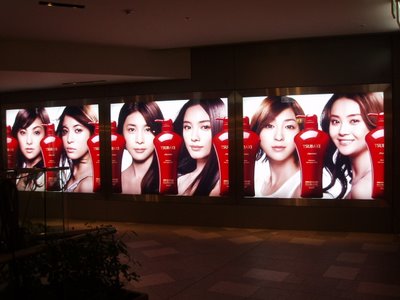


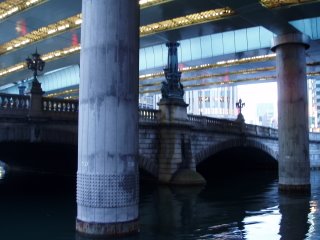
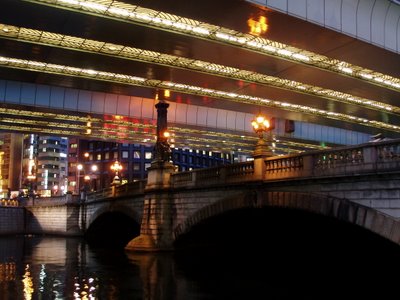


 Located diagonally opposite across the crossing is Isetan Men's, a more up-market department store building in which all floors are dedicated to menswear for stylish grown-ups. In addition, opposite to Marui Men across Yasukuni Street towers the Shinjuku Komori Building, a very low-profile but quite unusually shaped building (see left).
Located diagonally opposite across the crossing is Isetan Men's, a more up-market department store building in which all floors are dedicated to menswear for stylish grown-ups. In addition, opposite to Marui Men across Yasukuni Street towers the Shinjuku Komori Building, a very low-profile but quite unusually shaped building (see left).